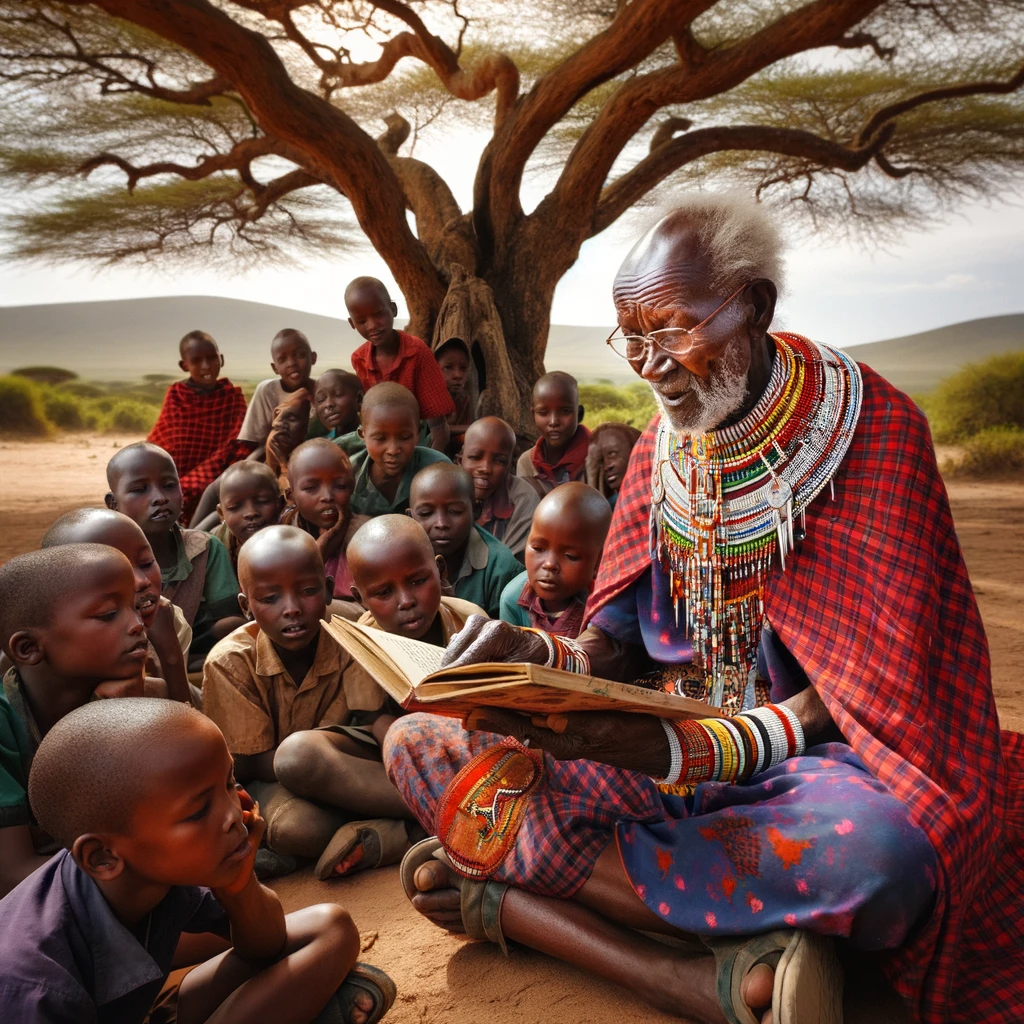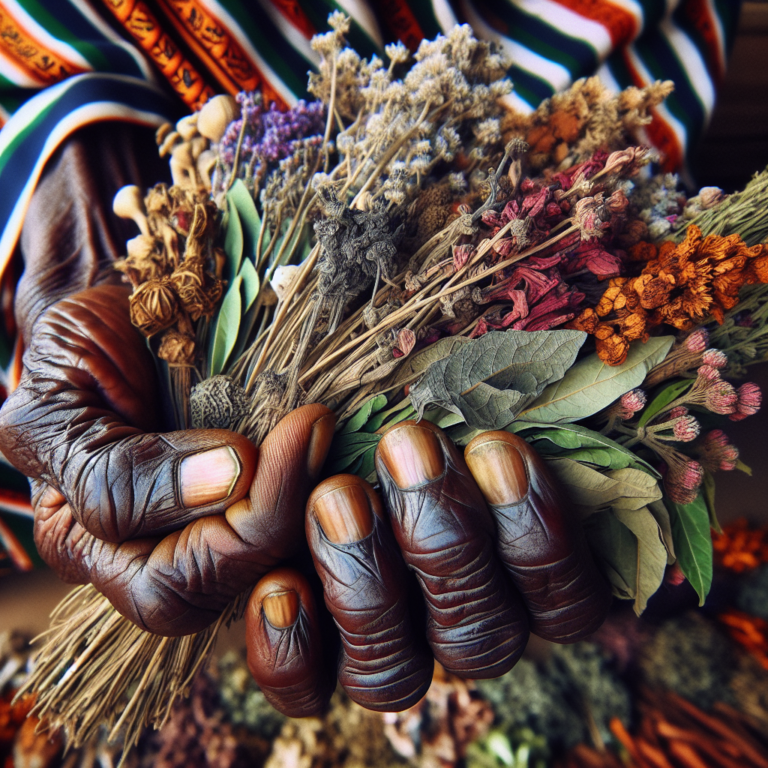What Is The Role Of Storytelling In Kenyan Culture?
In Kenyan culture, storytelling is not simply a form of entertainment; it is a significant and integral part of their heritage. Passed down through generations, stories serve as a means of preserving history, sharing life lessons, and fostering a sense of community. With a rich tapestry of oral traditions, folklore, and mythologies, storytelling in Kenya not only entertains but also educates, inspires, and connects individuals to their roots. By delving into the captivating world of Kenyan storytelling, one can truly appreciate its profound role in shaping the cultural identity and values of this vibrant nation.
Preservation of History
Oral tradition
Storytelling plays a crucial role in the preservation of history in Kenyan culture. Through oral tradition, stories and legends are passed down from one generation to another, ensuring that important cultural knowledge and historical events are not lost over time. Storytellers serve as custodians of their community’s history, sharing tales of triumphs, struggles, and significant events that have shaped the Kenyan people.
Passing down knowledge
Storytelling is an effective medium for passing down knowledge in Kenyan culture. Elders and community leaders use stories to teach the younger generation about their heritage, customs, and values. Through narratives, children and young adults learn about their cultural identity, ethical principles, and the wisdom of their ancestors. By immersing themselves in these stories, the younger generation gains a deeper understanding of their roots and a sense of belonging to their community.
Preserving cultural heritage
The art of storytelling is instrumental in preserving the cultural heritage of Kenya. Through folktales, myths, and legends, the unique traditions, beliefs, and practices of various ethnic groups are safeguarded and celebrated. These stories serve as a medium to transmit customs, rituals, and indigenous knowledge that have been passed down for centuries. By preserving cultural heritage through storytelling, Kenyans maintain a connection to their roots and ensure the continuation of their rich cultural tapestry.
Entertainment and Recreation
Folktales and fables
Storytelling provides a source of entertainment and recreation in Kenyan culture. Folktales and fables are shared with enthusiasm and excitement, captivating listeners of all ages. These stories often feature whimsical characters, enchanting settings, and moral lessons, providing both enjoyment and learning opportunities. Whether around a campfire or during community gatherings, storytelling brings people together for shared experiences and laughter.
Mythology and legends
Kenyan mythology and legends form a significant part of the storytelling tradition. These tales delve into ancient stories of gods, goddesses, and mythical creatures, captivating listeners with their larger-than-life narratives. Through mythology and legends, Kenyans not only find enjoyment but also gain a deeper understanding of their spiritual beliefs and cultural origins. The retelling of these stories serves to keep the mythology alive and continues to be an important facet of Kenyan storytelling.
Humorous anecdotes
Storytelling in Kenya also includes humorous anecdotes that provide lighthearted entertainment. These anecdotes often depict relatable situations, witty characters, and comedic scenarios, evoking laughter and mirth. Through humor, storytelling creates a joyous and relaxed atmosphere, fostering positive emotions and a sense of camaraderie among listeners. These anecdotes serve as a form of stress relief, offering moments of light-heartedness and shared laughter within the community.
Educational Purposes
Moral lessons and values
Storytelling serves as an effective tool for imparting moral lessons and values in Kenyan culture. Through carefully crafted narratives, stories convey important ethical principles, teaching individuals about compassion, honesty, and respect. The characters in these stories often face dilemmas and obstacles that reflect the challenges of daily life, allowing listeners to learn valuable life lessons through their experiences. By weaving moral values into the fabric of storytelling, Kenyans instill positive virtues in the younger generation and promote social harmony.
Teaching life skills
Stories in Kenyan culture often go beyond imparting moral lessons and also teach practical life skills. These stories feature protagonists who demonstrate problem-solving, critical thinking, and resilience in the face of adversity. By presenting relatable situations and role models, storytelling equips listeners with valuable life skills that they can apply in their own lives. Whether it is making wise decisions or overcoming obstacles, storytelling provides practical guidance for navigating life’s challenges.
Educating children
Storytelling plays a crucial role in the education of children in Kenya. Through stories, children are introduced to various subjects, from history and geography to science and mathematics. By weaving educational content into engaging narratives, storytelling makes learning a fun and interactive experience for children. Additionally, storytelling helps develop listening skills, imagination, and creativity in young minds. By capturing the attention of children and stimulating their curiosity, storytelling lays a strong foundation for their educational journey.
Community Bonding and Socialization
Bringing people together
Storytelling acts as a powerful tool to bring people together in Kenyan culture. Whether in the form of storytelling circles, community gatherings, or cultural festivals, storytelling enables individuals to connect and bond with one another. Through shared narratives, listeners engage in collective experiences, fostering a sense of togetherness and unity. Storytelling eliminates barriers, encourages dialogue, and celebrates the diversity within the community.
Promoting unity
Storytelling promotes unity within Kenyan communities by highlighting shared values, customs, and traditions. Through stories, individuals recognize the common threads that bind them together, fostering a sense of solidarity and belonging. Storytelling has the power to bridge generational gaps, economic differences, and ethnic diversity, creating a sense of unity among people of all backgrounds. It fosters understanding, empathy, and appreciation for the uniqueness of each community member.
Fostering a sense of community
The art of storytelling in Kenya fosters a sense of community by creating a space for collective participation and cultural exchange. Storytellers serve as mediators, facilitating conversations and intercultural dialogue among community members. As stories are shared and listened to, individuals feel included, valued, and connected to one another. By providing a platform for community members to contribute their own stories, storytelling nurtures a sense of ownership and pride in their shared cultural heritage.
Communication and Language Development
Improving language skills
Storytelling plays a vital role in improving language skills among Kenyans. By listening to stories, individuals develop their vocabulary, comprehension, and expressive abilities. Storytelling stimulates language acquisition, enabling listeners to grasp new words and phrases within the context of the narrative. This immersive language experience helps individuals become fluent and articulate speakers, enhancing their communication skills in everyday life.
Enhancing communication
Storytelling is a powerful tool for enhancing communication in Kenyan culture. Through stories, individuals learn the art of effective communication, including listening, expression, and non-verbal cues. The tone, gestures, and emotions conveyed in storytelling contribute to the overall message, enabling listeners to interpret and respond appropriately. By honing communication skills through storytelling, Kenyans become effective conveyors of their thoughts, feelings, and ideas.
Preserving indigenous languages
Storytelling plays a significant role in the preservation of indigenous languages in Kenya. As language is intimately intertwined with storytelling, the oral tradition helps keep indigenous languages alive. Storytellers play a crucial role in transmitting their native languages through stories, ensuring that future generations maintain a connection to their linguistic and cultural roots. By using storytelling as a medium, Kenyans actively preserve and promote the linguistic diversity that is essential for their cultural identity.
Preservation of Cultural Identity
Promoting cultural values
Storytelling serves as a powerful medium for promoting cultural values in Kenyan society. Through stories, individuals learn about the morals, ethics, and beliefs that underpin their cultural identity. By imparting cultural values, storytelling strengthens cultural cohesion, reinforces societal norms, and fosters a collective sense of responsibility. Through the narratives shared, Kenyans develop a deeper appreciation for their culture and uphold its values in their daily lives.
Transmitting customs and traditions
Storytelling plays a vital role in transmitting customs and traditions from one generation to another in Kenyan culture. By relaying stories that incorporate traditional practices, rituals, and ceremonies, storytellers ensure that these cultural elements are preserved and celebrated. Through storytelling, young individuals are initiated into the customs and traditions of their community, ensuring the continuity of these practices. Storytellers keep the flame of tradition burning, enabling Kenyans to pass on their rich cultural heritage to future generations.
Instilling pride in cultural heritage
Storytelling instills pride in cultural heritage among Kenyans by showcasing the uniqueness and significance of their traditions. Through stories that highlight historical achievements, cultural icons, and famous events, storytelling fosters a sense of pride and identity in community members. By weaving narratives that celebrate their cultural heritage, Kenyans are inspired to embrace their roots, preserve their traditions, and pass on their collective memory to future generations.
Healing and Therapy
Catharsis and emotional release
Storytelling provides a channel for catharsis and emotional release in Kenyan culture. Through shared narratives, individuals can express their deepest fears, joys, and challenges. Storytelling creates a safe space for emotional exploration, allowing listeners to connect with characters and narratives that resonate with their own experiences. By listening and empathizing with stories, individuals can experience emotional release, finding solace and healing within the collective storytelling community.
Promoting mental well-being
Storytelling plays a role in promoting mental well-being in Kenyan culture. Stories often touch upon themes of resilience, hope, and personal growth, offering listeners a source of inspiration and emotional support. By sharing stories that encompass diverse experiences of triumph over adversity, storytelling empowers individuals to confront their own mental health challenges. It fosters empathy, understanding, and resilience, promoting mental well-being within the community.
Addressing societal issues
Storytelling in Kenya addresses societal issues by bringing attention to social problems and encouraging dialogue for change. Through narratives that shed light on inequality, injustice, and human rights, storytelling prompts individuals to reflect and take action. Storytellers act as agents of change by encouraging critical thinking and advocating for social justice. By sharing stories that confront societal issues, storytelling becomes a catalyst for transformation within Kenyan communities.
Inspiration and Empowerment
Motivating individuals
Storytelling serves as a powerful source of motivation in Kenyan culture. Through stories of personal triumph, perseverance, and success, storytellers inspire individuals to pursue their dreams and overcome challenges. By presenting relatable characters who overcome obstacles, storytelling instills a belief in one’s own abilities and potential. These stories serve as a source of encouragement and inspire listeners to take action, embrace change, and create a positive impact in their own lives and communities.
Instilling confidence
Storytelling fosters the growth of confidence within individuals by showcasing characters who exhibit bravery, resilience, and self-assurance. By sharing stories that depict protagonists overcoming self-doubt or societal obstacles, storytelling empowers listeners to embrace their own unique qualities and strengths. Through the narratives, individuals gain a sense of self-worth and develop the confidence to navigate life’s challenges. Storytelling encourages individuals to believe in themselves and their ability to make a difference.
Encouraging social change
Storytelling serves as a catalyst for social change in Kenyan culture. By sharing stories that challenge societal norms, discrimination, and inequality, storytellers mobilize listeners to envision a more just and inclusive society. Storytelling fosters empathy, understanding, and tolerance, leading to collective action and advocacy for positive change. By engaging the audience through narratives that challenge the status quo, storytelling encourages individuals to contribute to the betterment of their communities.
Intergenerational Connection
Strengthening family ties
Storytelling strengthens family ties by creating spaces for intergenerational connection and bonding. Within families, stories are shared from one generation to another, allowing grandparents, parents, and children to connect through shared narratives. This passing down of stories nurtures a sense of belonging and kinship, as younger family members gain an understanding of their ancestral roots and family history. Storytelling reinforces the importance of family and cultivates a deeper appreciation for familial relationships.
Building relationships
Storytelling builds relationships outside of the family unit as well. In Kenyan communities, storytelling circles and community gatherings provide opportunities for individuals to engage with one another on a personal level. Through storytelling, individuals establish connections based on shared experiences and perspectives, fostering friendships and building a sense of community. By breaking down barriers and encouraging dialogue, storytelling strengthens the social fabric within Kenyan society.
Connecting the young and old
Storytelling bridges the generation gap and connects the young and old in Kenyan culture. It provides a platform for elders to share their wisdom and experiences with younger generations. By listening to the stories of their elders, younger individuals gain insights into the past, cultural traditions, and ancestral knowledge. The intergenerational exchange facilitated by storytelling fosters mutual respect, understanding, and appreciation between generations, strengthening the social fabric and preserving the wisdom of the older generation.
Preservation of Indigenous Knowledge
Medicinal and botanical knowledge
Storytelling plays a crucial role in preserving medicinal and botanical knowledge in Kenyan culture. Herbal remedies, healing practices, and knowledge of medicinal plants are passed down through stories. Storytellers carry the responsibility of sharing this valuable knowledge, ensuring that future generations are equipped with traditional healing methods. By embedding medicinal and botanical knowledge within narratives, storytelling becomes a vessel for preserving indigenous knowledge in Kenya.
Astronomy and farming techniques
Storytelling preserves indigenous knowledge related to astronomy and farming techniques in Kenyan culture. Through stories, ancient agricultural practices, celestial observations, and traditional farming methods are transmitted from one generation to another. By connecting stories with these practical fields of knowledge, storytelling ensures the continuity of indigenous agricultural wisdom and celestial understanding. It allows Kenyans to remain connected to their land, traditions, and symbiotic relationship with nature.
Hunting and gathering practices
The oral tradition of storytelling keeps alive the knowledge of hunting and gathering practices in Kenyan culture. Stories of successful hunts, techniques to track prey, and sustainable gathering practices are shared through narratives. Storytellers share the wisdom of their ancestors, passing on the skills necessary for survival in the wild. By preserving hunting and gathering practices through storytelling, Kenyans maintain a bond with their ancestral ways of life, ensuring the preservation of indigenous knowledge.
In conclusion, storytelling in Kenyan culture serves a myriad of important roles. It preserves history, imparts knowledge, and promotes cultural identity. It not only entertains but educates and fosters a sense of community. Through storytelling, communication and language skills are enhanced, indigenous knowledge is preserved, and healing and empowerment are facilitated. The intergenerational connection and preservation of cultural heritage are fostered, inspiring individuals and encouraging positive social change. Storytelling is truly the heartbeat of Kenyan culture, weaving individuals and communities together through the power of narratives.






